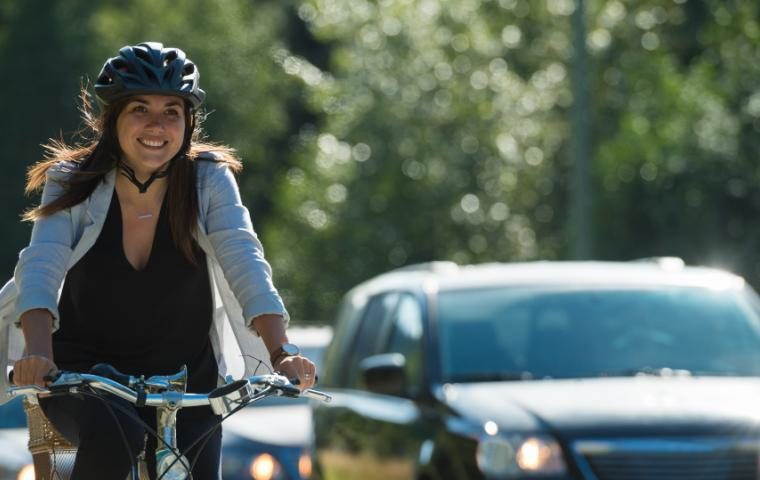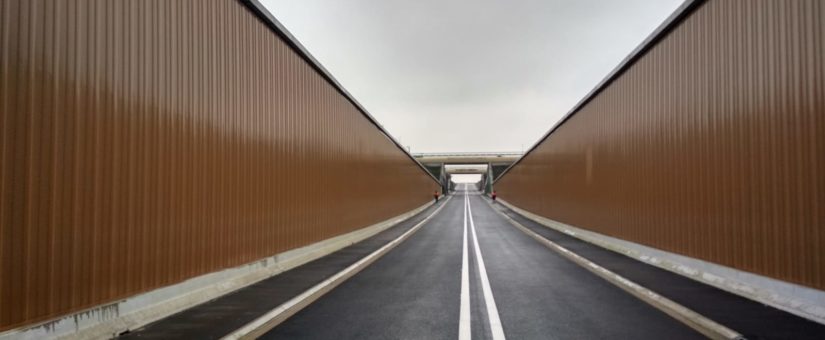Safety in urban areas and on the cycling lanes
As experts in Road Safety, one of our tasks should be to promote greater awareness about the safety of people, both in urban areas and on roads. In this sense, although our products are intended to make people’s lives safer, at Metalesa we intend to go further and we want to do our bit in this ongoing process of awareness.
In today’s post we talk about the safety of cyclists when they circulate through urban areas or roads. Undoubtedly, it is one of the most vulnerable groups that suffer too many accidents, which is a problem that must be solved.
To start with, here there are some figures. In 2014, 75 cyclists died on Spanish roads, in 2015 there were 55 and in 2016 it was reduced to 33. Having said that, although the trend of cyclist accidents seemed to be decreasing in the last five years, the truth is that in May 2017, these figures were already doubled, and in 2020, 36 cyclists lost their lives, a surprising number after long months of confinement.
At the beginning of the article we mentioned that our products are intended to ensure safety. However, people must also do their part to achieve this goal. Here there are some useful tips for both cyclists and drivers to ensure the safety of those both in urban areas and on roads.

Everything a cyclist needs to know to ensure their safety
Although there may be external factors that endanger their safety, it is important that the riders know how to protect themselves:
- To know traffic regulations, and therefore, what you can do and what it is forbidden on the road will allow them to be more aware of the dangers.
- If there is no bike lane on the road, it is preferable to travel on roads with a wide shoulder, much better if they are little traveled.
- The use of conspicuous clothing is recommended to make themselves more visible. Here we also include the helmet color, which is mandatory.
- Check wheels, brakes and lights from time to time. Something as fast as a simple check-up can save a rider’s life. Regarding the lights, it is important to note that they should be used both at the front and at the rear in low light hours. In addition, it is mandatory to turn on the lights when driving through the interior of a tunnel, whatever time it is.
- Use of the rear-view mirror. This device is less common than it should be. Rather few cyclists decide to attach a rear-view mirror to their bicycle, but it is undoubtedly a very useful component to increase safety, and cheap indeed.
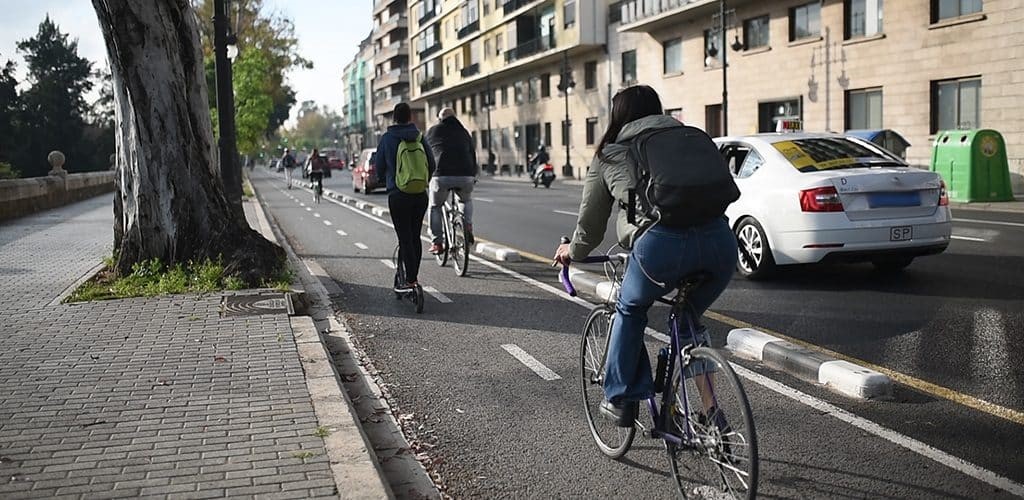
What must a vehicle driver take into account to ensure the safety of cyclist?
- It is important to bear in mind that, when passing a cyclist, the air displaced by the vehicle can throw him off balance. Therefore, when overtaking, at least 1.5m of lateral space must be left as a safety distance.
- If cyclists are observed, slow down and be extremely cautious.
- The horn should not be used to warn the cyclist of the presence of the vehicle because it can scare, distract and cause them a fall.
- It is very important to know when cyclists have priority. For example, a group of cyclists has priority when they have started a crossing or entered a roundabout.
- Only with greater respect for the priority of passage and the safety distance could the number of cyclist victims be significantly reduced.
We are aware that these are quite obvious pieces of advice, but it is not a bad thing to remember them considering that, statistically, most accidents occur precisely because of not complying with these simple tips.
Road Safety Improvements for cyclists through urban planning
Not only are people becoming more and more aware, so are cities, orienting their planning towards more efficient models, both in terms of safety and sustainability. In this sense, the promotion of urban mobility through the use of bicycles entails an ambitious urban reorganization that involves the implementation of cycle lanes. In fact, we are seeing that the cities deploy every day more kilometers of bike lanes.
How do we guarantee the safety of cyclists from Metalesa?
Protection is our goal. That is why we design and manufacture road safety products specially designed for this.
Our M009 cyclopedestrian railing is a restraint system for cyclists that cannot be absent in urban areas or on roads to reduce the accident rate of cyclists.
It is located at the ends of bridges or crowning walls to prevent pedestrians and cyclists from falling into the void. It differs from a normal railing in its height, between 1.3 – 1.5 meters, which prevents cyclists from exceeding it, which is perfectly possible with traditional railings for pedestrians up to 1 meter high.
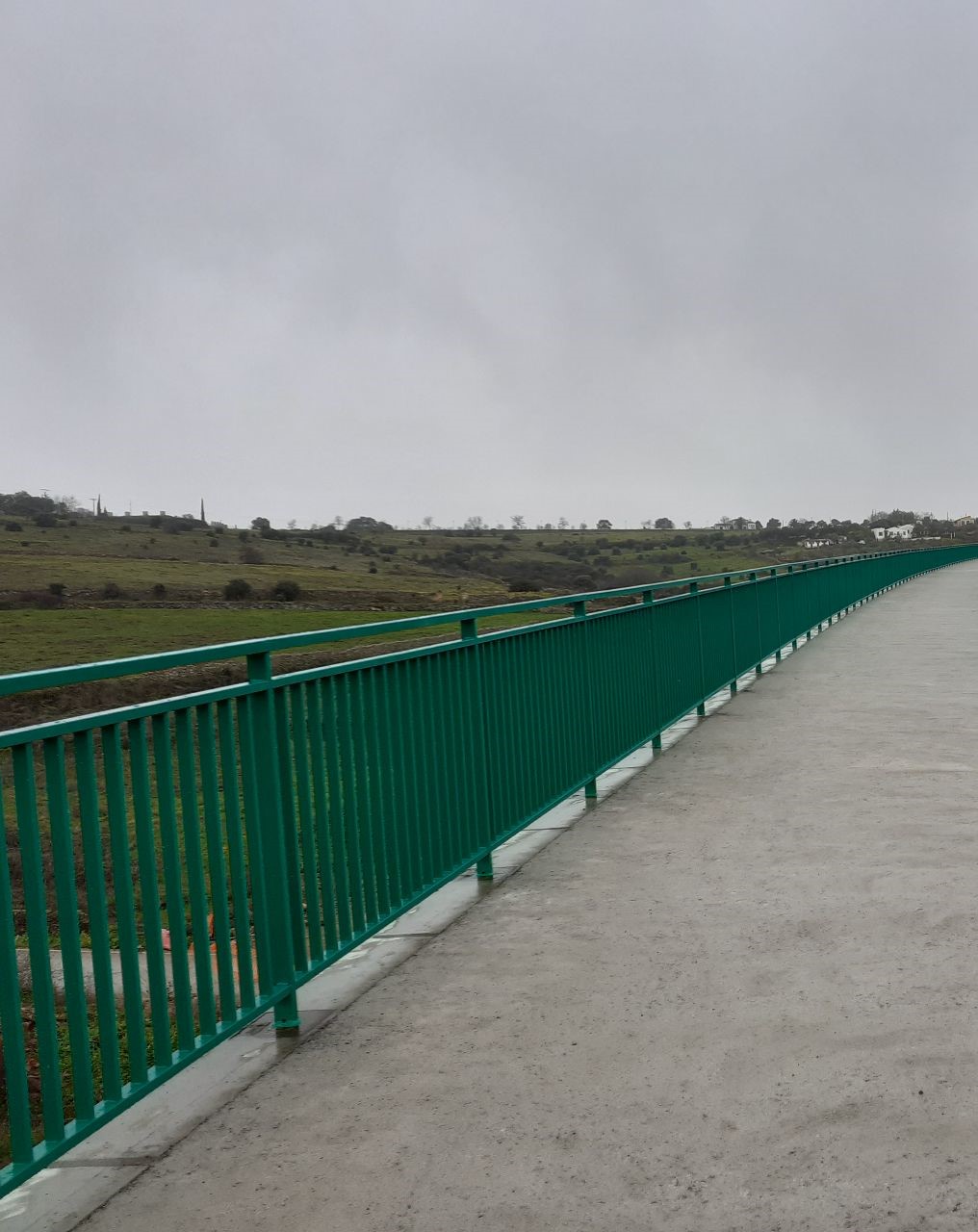
In addition, all the components of the railing are protected against corrosion at the customer’s discretion: hot galvanized, thermo-lacquered or both treatments at the same time.
The thermo-lacquering allows to facilitate the aesthetic integration of the cyclopedestrian railings with the environment, since we can paint them in any color from the RAL chart.
In a previous post we made reference to how 5G technology in cities can help ensure maximum safety. Perhaps a day will come when cyclists will cease to be a vulnerable group thanks to the development of tools based on wireless connectivity. However, at Metalesa, we obviously support technological progress and the great advances that it can bring to road safety, but we also want to take advantage of it to call for the responsibility of each one. Safety is everyone’s business!
En un post anterior hicimos referencia a cómo la tecnología 5G en las ciudades podrá ayudar a garantizar la seguridad al máximo. Quizá llegará algún día en el que los ciclistas dejen de ser un grupo vulnerable gracias al desarrollo de herramientas basadas en la conectividad inalámbrica. No obstante, desde Metalesa, evidentemente apoyamos el progreso tecnológico y los grandes avances que puede aportar a la seguridad vial, pero también queremos aprovechar para hacer un llamamiento a la responsabilidad de cada uno. ¡La seguridad es cosa de todos!
The importance of wall covering in facades and tunnels
Wall cladding in facades and tunnels is one of our most demanded services both nationally and internationally, and at the same time one of the most unknown. For this reason, in this article we want to tell you about the great advantages that wall coverings have and what is the difference between cladding on the façade and in tunnels.
Wall cladding in tunnels
In this case, it is a wall cladding made of galvanized steel sound-absorbing panels, specially designed to deal with noise pollution derived from road and rail traffic, both inside and at tunnel entrances. At the customer's choice, galvanized steel panels can be filled with rock wool, a material with a high sound absorbing capacity that facilitates the rebound of acoustic waves inside, thus trapping much of the sound.
Sometimes, poor tunnel lighting poses a greater risk to drivers. In this sense, the installation of our wall cladding on the concrete walls of the tunnel brings luminosity to the interior, facilitating vision and increasing safety. In addition, any additional signaling or lighting system can be installed on our cladding.
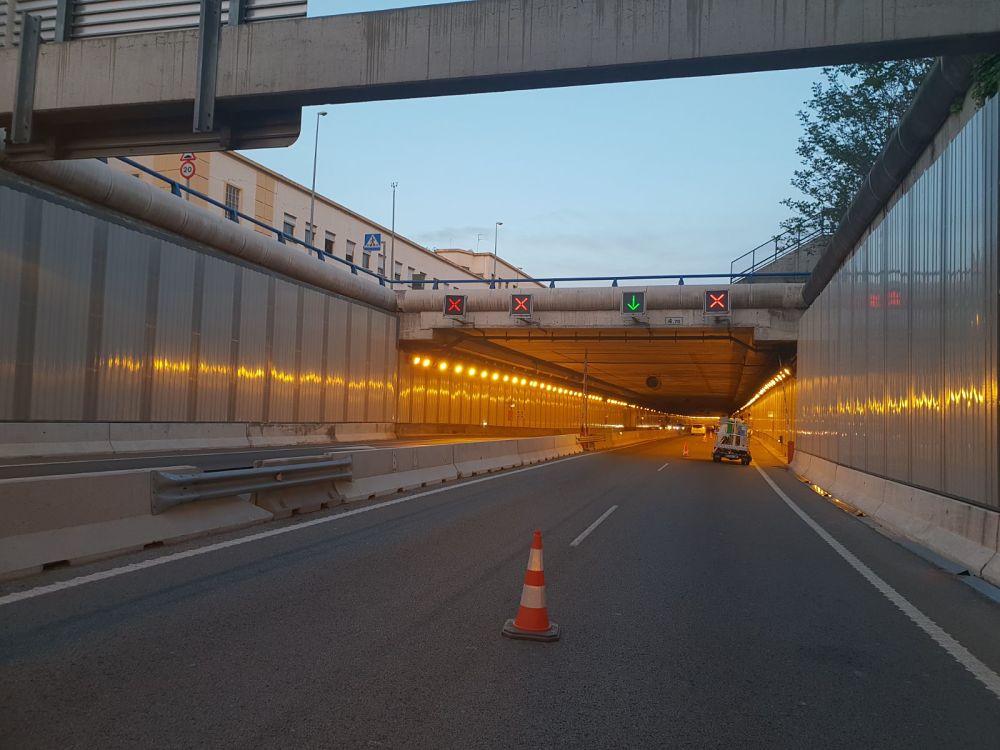
Characteristics and elements of the panels for sound absorbing tunnel coating.
We have several standard construction solutions, configured thanks to the experience of having carried out numerous projects that has helped us to optimize the design and its features.
Our team of engineers studies each project and of steel with the client's specifications, defines the best technical solution. Typically, the cladding has the following elements:
- Panels: made of corrugated and galvanized steel sheet. They can be perforated in case of acoustic absorption requirements. There may be a single front panel or front and rear panels. At the customer's request, its finish can be thermo-lacquered in different colors from the RAL chart.
- Paneles: realizados con chapa de acero grecado y galvanizado. Pueden ir perforados en caso de haber requerimientos de absorción acústica. Puede haber un solo panel delantero o paneles delantero y trasero. A petición del cliente, su acabado puede ser termolacado en diferentes colores de la carta RAL.
- Rock wool: This material is used to absorb sound waves generated by transport systems.
- Supporting structure: It is a wall anchoring system using adjustable rods made up of profiles that allow the panels to be adapted to walls with almost any type of irregularity. We have several bearing systems, in each project the most suitable will be chosen depending on elements such as the state of the wall or the type of coating required.
Advantages of panels for sound absorbing tunnel lining
- Corrosion resistance: we have different solutions depending on the environmental specifications in the area, including up to C5. In addition to being made with galvanized materials, if the client wishes, we can apply primer and / or thermo-lacquering techniques, which protect the coating from the consequences of the passage of time and adverse weather conditions.
- As we have already mentioned, this type of cladding fulfills an important acoustic function, and this is precisely its main advantage.
- Easy installation due to its lightness. High productivity in assembly.
- Its maintenance and repair is also easy in case of damage by accident.
- It is a non-flammable coating.
- It fulfills an aesthetic function as the customization of the color is possible, and it also brings light, unlike the concrete walls to which we are accustomed.
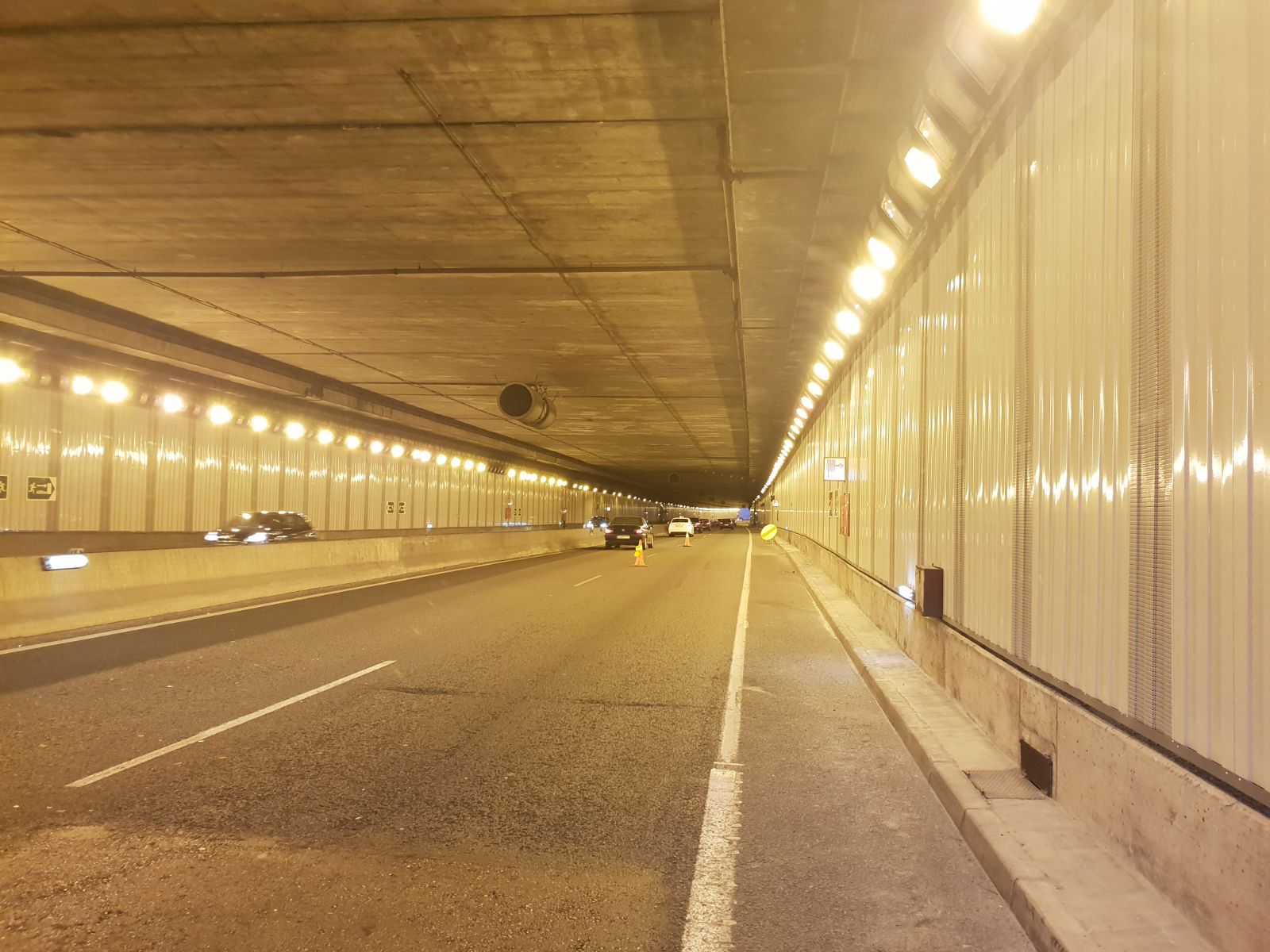
Wall cladding integrated into building facades
In order to minimize the noise pollution produced by environmental noise, such as traffic or the bustle of people, at Metalesa we manufacture and install panels that function as wall cladding on facades, and that are integrated as an acoustic screen in the building .
Below, we show you some images of one of our acoustic wall cladding integration project on the façade of the Atlético Baleares football field. In this case, the panels have been used both to isolate noise from the field, and to prevent noise from the street from breaking into the sports facility.

On the other hand, this product offers a great opportunity to improve the aesthetics of a building through an elegant and quality solution that, thanks to the customization options that we offer at Metalesa, will be able to show off the corporate colors. In this sense, a change to the façade by means of a cladding of these characteristics can make an installation become "something iconic" of an area and give it a certain prestige. Without a doubt, the Atlético de Baleares field is proof of this.
Characteristics and elements of panels for sound absorbing coating integrated in facades
In the same way as in the case of tunnels, we have several standard construction solutions applicable to the integration of acoustic coatings in facades. Our team of engineers will define the best technical solution according to the customer's specifications.
The elements that make up this solution are usually the same as in the case of tunnels. The main difference is usually in the bearing structure, which must be defined ad-hoc for each project, since it is not the same to anchor acoustic panels to a low-rise wall but with great vibrations due to circulating traffic, than to a wall. of a high-rise building and normally without these vibrations.
Advantages of wall cladding on facades of urban buildings
The facade is the exterior wall of the enclosure or vertical closure that surrounds. It is one of the most important elements of the construction along with the roof. Both act as a barrier against external weather factors
Providing the facades of the infrastructures in urban areas with a facade cladding is essential, as it is one of the most important elements of its construction due to its acoustic, aesthetic and climatic function.
Acoustic and mechanical properties of our panels
The acoustic properties of our panels have been evaluated according to EN 1793-1 standards, obtaining maximum acoustic absorption and insulation values. Any acoustic product manufactured by METALESA SEGURIDAD VIAL complies with the requirements established for CE MARKING in compliance with annex ZA of the EN 14388 standard.
Regarding mechanical behavior, the panels are tested according to the EN 1794-1 standard, having obtained very high loads in tests carried out in accredited laboratories.
If you are looking to use wall cladding in facades or tunnels, contact us and we will give you a solution that suits your needs. Call us at 96 088 99 44 or send us an email to metalesa@metalesa.com
